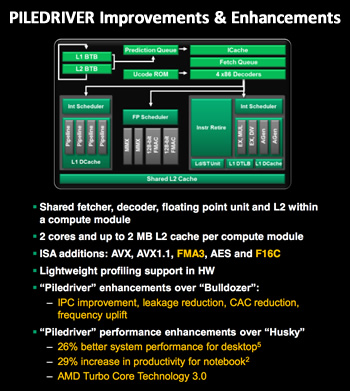Citing information from "industry sources", TechPowerup reports that the next generation of AMD FX processors will be in production during Q3 of 2012. While the wheels of production are expected to spin up for high-end FX desktop CPUs later this year, it was hardly a week ago that AMD announced the launch of its Trinity APU. Trinity, a Piledriver-based APU, represents the latest step in the gradual evolution of AMD's Fusion family, an integrated APU solution aimed primarily at ultra-portables. Although AMD Fusion continues to be most well-suited for mobile devices, it can be found in just about everything though, from netbooks to desktops.
Enthusiasts may be pleased to hear that upcoming Piledriver CPUs will maintain compatibility with AMD's existing AM3+ platform, a 942-pin socket design which coincided with last year's launch of first-generation Bulldozer chips.
As such, FX chips which bear the Piledriver architecture will feature a familiar 32nm design with integrated dual-channel 1866MHz DDR3 memory controllers – the same found in current generation FX CPUs. Turbo Core will also carry over to Piledriver FX processors, a technology similar to Intel's TurboBoost feature.
Although the new architecture seems more evolutionary than revolutionary per se, Piledriver will feature some unique bulletpoints – features which will set it apart from current FX offerings. Most notably, the new CPUs are expected to deliver about a 10 percent performance bump while simultaneously offering a 10 to 24 percent energy savings. This lower power consumption is the direct result of AMD's new energy-recycling technology, resonant clock mesh, a clever feature which will also be responsible for improved thermals and higher attainable clock speeds.
